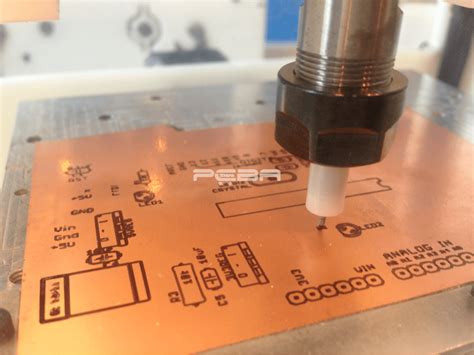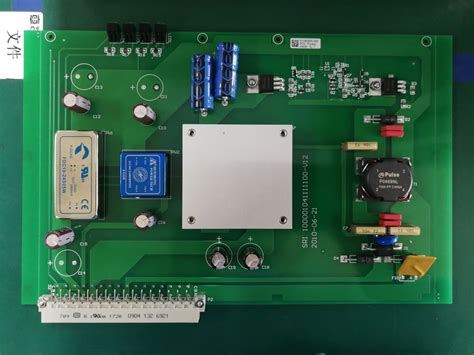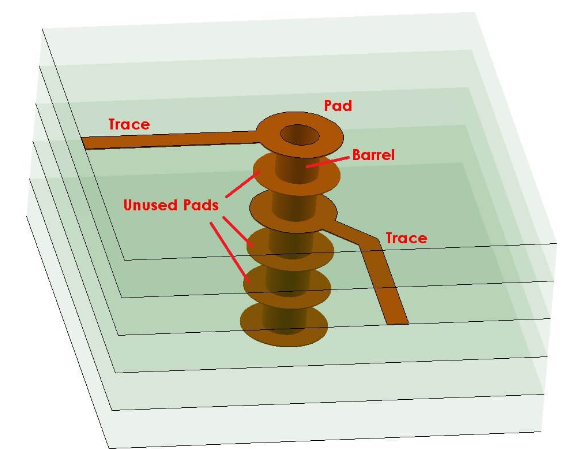PCB board design based on Protel
Protel is a circuit-aided design system launched by Altium. It is the first board-level design system that integrates all design tools. Based on the completed schematic, using Protel for PCB design generally follows several steps, such as determining the shape, layout, wiring, and rule checking. This article analyzes the basic principles of layout and wiring, and explores some experience and skills in the entire PCB design process.
With the popularization of computers, electronic CAD technology is no longer just a special tool for high-level professionals to design large-scale integrated circuits. In particular, the emergence of Protel software enables general engineering and technical personnel to use it to deal with circuit design problems in daily work and improve work efficiency. Protel is the most convenient, fastest, and best humanized auxiliary tool in the circuit-aided design (EDA) industry. It is also the most used EDA tool in China. This article uses Protel99 SE as a design tool to analyze and explore the basic principles and experience and skills in PCB design.
1.Quickly determine the PCB shape
To design a PCB, you must first determine the shape of the circuit board, usually by drawing the electrical wiring range on the prohibited wiring layer. Unless there are special requirements, the general shape of the circuit board is rectangular, and the aspect ratio is generally 3:2 or 4:3. Before drawing, you can draw two horizontal lines and two vertical lines at will, and then use the “Set Origin” tool in the “Place Toolbar” to set the endpoint of a line segment as the origin, that is, the coordinates are (0, 0). Then double-click each line segment and change the coordinate values of its starting point and end point accordingly, so that the four line segments are connected end to end to form a closed rectangular frame, and the appearance of the circuit board is determined. If you need to adjust the size of the circuit board during the drawing process, just modify the corresponding coordinate values of each line segment. Considering the cost, copper wire length, and noise resistance, the smaller the size of the circuit board, the better, but if the board size is too small, the heat dissipation is poor, and adjacent wires are prone to interference. However, when the size of the circuit board is greater than 200mm×150mm, the mechanical strength of the circuit board should be considered, and fixing holes should be appropriately installed to play a supporting role.
2.Component Layout
Before starting the layout, you must first load the components through the network table. During this process, you will often encounter errors that the network table cannot be fully loaded. This can be mainly divided into two categories: one is that the component cannot be found. The solution is to confirm the package form of the component defined in the schematic diagram and confirm that the corresponding PCB component library has been added. If the component is still not found, you must create a component package yourself; the other is missing pins. The most common is the pin loss of diodes and transistors. This is because the pins in the schematic diagram are generally letters A, K, E, B, C, while the pins of PCB components are numbers 1, 2, 3. The solution is to change the definition of the schematic diagram or change the definition of the PCB component to make it consistent. Experienced designers generally build their own PCB component library based on the actual component package shape, which is easy to use and not prone to errors.
When doing layout, you must follow some basic rules:
(1) Special considerations for special components.
High-frequency components should be as close as possible, and the shorter the connection, the better; the distance between components with high potential difference should be as large as possible; heavy components should be fixed with brackets; heat-generating components should be kept away from thermistors and equipped with corresponding heat sinks or placed outside the board; the layout of adjustable components such as potentiometers, adjustable inductors, variable capacitors, and micro switches should take into account the structural requirements of the entire machine and be based on convenient adjustment. In short, when laying out some special components, comprehensive consideration should be given to the characteristics of the components themselves, the structure of the chassis, and the convenience of maintenance and debugging to ensure a stable and easy-to-use PCB board.
(2) Layout according to circuit functions.
If there are no special requirements, layout the components according to the component arrangement of the schematic diagram as much as possible. Usually, the signal is input from the left and output from the right, and input from the top and output from the bottom. Arrange the positions of each functional circuit unit according to the circuit flow to make the signal flow smoother and keep the direction consistent. In addition, the digital circuit part must be laid out separately from the analog circuit part to reduce interference.
(3) Text marking on the silk screen layer.
In order to facilitate the installation and maintenance of the circuit, the required logo patterns and text codes are generally printed on the upper and lower surfaces of the printed board, such as component numbers and nominal values, component outline shapes, manufacturer logos, etc. Many beginners often ignore the design of the silk screen layer, or only pay attention to the neat and beautiful placement of text symbols. After the PCB board is actually made, the characters on the board are either blocked by the components or invade the soldering area and are erased. Some also put the component numbers on adjacent components, causing inconvenience in assembly and maintenance. The correct principle of silk screen layer character layout should be unambiguous, make full use of the gaps, and be beautiful and generous.
Wiring
This is a very important link in PCB design. PCB wiring includes single-sided wiring, double-sided wiring and multi-layer wiring. There are two ways of wiring: automatic wiring and interactive wiring. Pay attention to the following issues during the wiring process:
(1) Line length.
The copper wire should be as short as possible, especially in high-frequency circuits. The turning points of the copper wire should be rounded or beveled. Right angles or sharp angles will affect the electrical performance in high-frequency circuits and high wiring density. In addition, when wiring on both sides, the wires on both sides should be perpendicular, oblique or curved to each other, and avoid being parallel to each other to reduce parasitic capacitance.
(2) Line width. The width of the copper wire should be based on the principle of meeting the electrical characteristics requirements and facilitating production. Its minimum value depends on the current flowing through it, but it should generally not be less than 0.2mm. If the board area is large enough, the width of the copper wire should not be less than 0.3mm. The relationship between the ground wire and the power line is: ground wire>power line>signal line. Usually the width of the power line is 1.2-2.5mm, and the width of the signal line is 0.2-0.3mm.
(3) Line spacing.
The spacing between adjacent copper wires should meet electrical safety requirements. At the same time, for the convenience of production, the spacing should be as wide as possible. The minimum spacing should at least be able to withstand the peak value of the applied voltage. Generally, the distance between copper wires with a potential difference of 2000V should be greater than 2mm. In the case of low wiring density, the spacing should be as large as possible. Usually, the line spacing should not be less than 0.3 mm.
(4) Shielding and grounding. The common ground wire of the copper-clad wire should be placed on the edge of the circuit board as much as possible. As much copper foil as possible should be reserved on the circuit board as the ground wire, so that the shielding ability can be enhanced.
(4) Conclusion
The design of the PCB board diagram is a complex and simple process. For the same circuit or the same instrument, even if the components and parameters are exactly the same, different results may be produced due to different component layout designs and electrical connection directions, and the results may be very different. Therefore, it is necessary to consider how to correctly design the structure of the component layout of the printed circuit board, correctly select the wiring direction, and the process structure of the overall instrument. A reasonable process structure can eliminate the noise interference caused by improper wiring, and at the same time facilitate installation, debugging and maintenance in production.







